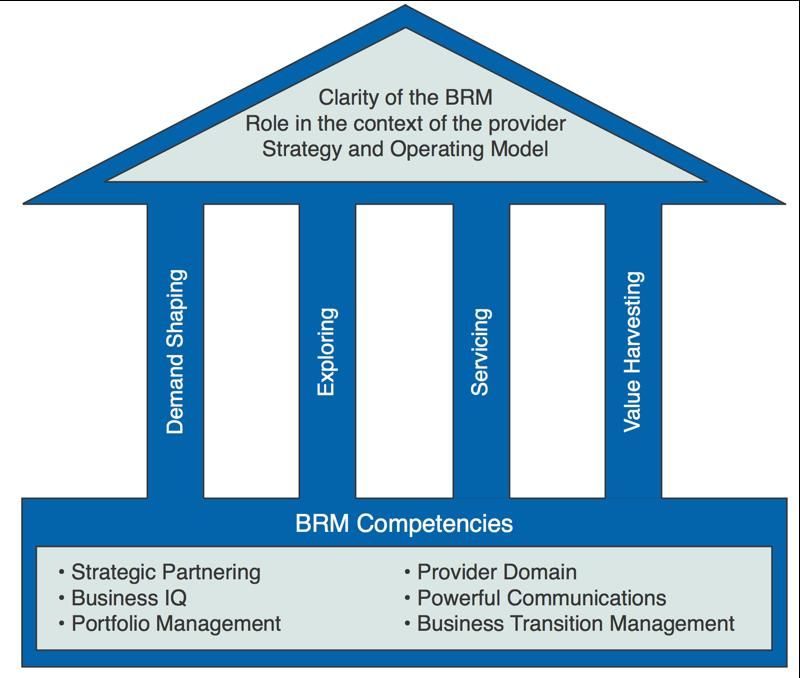In 2021 alone, 5.4 million applications for new business start-ups were filed globally as both the e-commerce sector and digital corporate landscape continue to thrive post-pandemic. Starting a business has never been easier while maintaining one has never been harder.
In a highly competitive online arena, business relationship management has never been more important. Building strong partnerships with companies alike is the key to driving value and increasing brand authority amongst a sea of competitors.
From value harvesting to demand shaping, maintaining healthy connections in a B2B environment will see you on your way to success. As we delve further into the future of business relationship management in a new digital age, read on to find out how you can improve your own relationship management tactics in a post-pandemic landscape.
What is Business Relationship Management?
Business Relationship Management (BRM) is defined by the BRM Institute as “a philosophy, capability, discipline, and role to evolve culture, build partnerships, drive value, and satisfy purpose.”
Prioritising business based relationships enable company leaders within the same niche sectors to share both skills and knowledge amongst their teams in a value-producing partnership that aims to create opportunities for all participants involved.
BRM can be described as a connector between a service provider and a business who are looking to utilise a partnership to improve either their business to business connections (B2B) or most commonly their business to consumer connections (B2C).
Learning to combine efforts to further enhance return on investment for both businesses involved is an easy way to build high levels of authority within a competitive sector and establish a larger customer network.
If we are to look into the functions of BRM in more detail, there are three key features of the strategy that stand out. These can be described using the ‘House of BRM’ which details the initiative’s core disciplines.

(Image Source: Van Haren)
As you can see above, there are three separate components that make up an effective BRM strategy.
The foundation ensures that the business looking to build new partnerships has the capability and capacity to deliver value to potential partners. Focusing on the importance of communication and experience within the sector, potential partnering organisations need to be able to trust the business they are building a relationship with and see the potential for a return on the relationship.
Secondly, the pillars signify the transactional value shared between the two businesses within the partnership. From demand shaping to value harvesting, these lines of connection indicate the core business relationship management disciplines.
Finally, the roof of the house is there to protect the clarity of the business relationship, ensuring that both parties are working towards the same goal.
When done correctly, a business relationship should not act as a transaction, but rather a partnership where two parties work together towards a shared goal.
The Difference Between B2B & B2C Relationships
While many of the strategies for success remain the same, there is a great deal of difference between B2B partnerships and B2C relationships.
Business-to-business (B2B) partnerships are fostered using a long term strategy that aims to strengthen the communication between two businesses. In a typical B2B relationship, a business will offer to provide a service to another business in return for a value add, whether it be financial or skills-based.
Engaging in more B2B relationships allows a company to widen their services and gain more authority within its sector. Partnerships can encourage growth within a company and aid the success of both sales and marketing teams.
Business-to-consumer (B2C) relationships follow a similar strategy, however, the focus is on the businesses’ audience themselves, revolving around customer retention in a competitive market. Fostering a strong relationship with a consumer demographic can improve brand loyalty, and contribute to a high return on investment.
When practising both B2B and B2C strategies, customer insights are the key to success. Taking a closer look into demographic gratifications and market trends using analytic tools, new forms of artificial intelligence and new digital aids, business leaders can gather insights into the campaigns that will attract B2B partnerships and stay on top of the trends that keep customers loyal.
In an e-commerce based environment in particular, where start-ups have increased by 35% since 2020, engaging in business relationship management strategies has played a key role in the success of new entrepreneurs entering the game. In a digital age where the active consumer is very much in control, it’s up to new businesses and service providers themselves to put in the extra effort in terms of conducting research and personalising campaigns, in order to keep both partnership prospects and the consumer interested.
The Impacts Of The Pandemic’s Digital Shift
The Covid-19 pandemic has had a significant impact on the future of business relationship management. As a global lockdown pushed the corporate landscape inside, new remote working trends and the birth of post-pandemic technological advancement has transformed the way businesses communicate with both their customer and each other.
Maintaining a B2B or B2C relationship within the realms of a digital shift has not been an easy transition. As the consumer market continues to become more tech-savvy, the birth of the digital age has taught new entrepreneurs to play a more active role within the customer experience and provide new forms of ‘online value add’ within B2B relations.
Partnership prospects are concerned about digital representation in a new online landscape. Present-day B2B relations must focus on improving brand awareness online and engaging with digital trends in order to keep up with competitors and maintain their own B2C relationships.
Post-pandemic research has shown that 35% of business leaders believe that Covid-19’s digital transformation has improved their B2B/B2C relationships and has aided them in meeting new customer expectations while optimising partnership efficiency.

(Image Source: Super Office)
As you can see above, there have been a number of benefits associated with going digital in the wake of the pandemic’s pressures. Not only have new digital aids such as virtual assistants and augmented reality-based software enhanced the WFH experience, but new technologies have improved global partnerships between business leaders. Digitalising the transaction of data, knowledge and services has increased trust within business partnerships and have encouraged more entrepreneurs to prioritise their business relationship management in the fight for online success.
In response, 79% of corporate companies have stated that Covid-19 has encouraged them to increase their budget for digital transformation. In fact, global spending on new forms of digital transformation is set to reach $2 trillion by the end of 2022, with the corporate sector at the heart of a technological future.
As the corporate sector continues to digitalise its B2B/B2C strategies, let’s have a closer look at some of the technologies that are set to transform the future of business relationship management.
The Future Of Technology In The Corporate Sector
In the wake of Covid-19’s digital shift, there have been a number of technological renovations within the corporate sector. As we step into the future of a post-pandemic business landscape, let’s first meet the technologies that are revolutionising the future of business-to-business communication and enhancing the success of relationship management.
Virtual Reality
One of the technologies tipped for success in a post-pandemic corporate world is the implementation of immersive technology within the workplace.
Both virtual reality and augmented reality-based tech have enhanced all aspects of the corporate sector from communication to productivity. Augmented reality for example is able to add digital layers onto reality, in order to enhance real-time digital workspaces, while virtual reality aims to transform the future of immersive global communication between teams, clients and other businesses.
In fact, VR based tech spending in the business world alone is expected to grow to $4.26 billion by 2023 according to ARtillery Intelligence. As tech-savvy entrepreneurs continue to embrace new forms of immersive training, and modern forms of real-time communication, business relationship management across the company as a whole is tipped to improve.
As a digital-based corporate sector adapts to serving a globally diverse online audience, it is also time to start widening the net in the search for overseas partnerships. VR’s immersive attributes have encouraged business leaders to connect digitally and foster strong lines of communication between themselves and their global partners.
Artificial Intelligence
Artificial intelligence is also set to revolutionise a digital workplace. With more WFH based companies than ever before, AI continues to automate a number of business practices from streamlining data sharing to enhancing consumer insight research.
Better still, experts suggest that AI can also improve the relationship between business leaders and third-party vendors, improving the BRM experience. AI-infused tech such as personal assistants is able to share business data in real-time, streamlining the line of communication between business-to-business while also invoking more trust when completing important data transactions.
As we step into a digitalised future, let’s have a closer look at how technology can improve business relationship management in a post-pandemic corporate sector. Read on to find out how to nurture your digital partnerships in 5 simple steps.
5 Ways To Improve Your Business Relationship Management In A Digital Corporate Sector
It has never been more important to nurture your business partnerships. In a densely populated e-commerce environment, business ventures tend to be more successful when they have support from other leaders in the field. Whether that partnership is data or communication based, working towards shared goals and values within a strong B2B relationship can ensure success amongst competitors.
Nurturing strong partnerships can improve niche authority, credibility and trust amongst your B2C customers too. If they see your business collaborating with other leaders within the field, your demographic are more likely to become loyal, repeat buyers, boosting customer retention and ROI.
The key here is to focus on the power of relational value. Building an effective business partnership that benefits both parties involved should not be based on transactional goals, but rather a relationship that can blossom and remain reliable for future collaborations.
David Crean, Coast BioVentures LLC, states that it is important to nurture and cultivate your network of relationships daily, in order to see partnership success. “Don’t approach people in a transactional nature. Meet with them or call periodically. Get to know their needs, values and what drives them” he claims.
“Ask yourself, “How can I be of service and value to them?” Remember, it isn’t about you but about them. They will remember how you made them feel.”
For those of you looking to improve your business relationship management skills, we have you covered. Here are 5 ways to boost your communication tactics and personalise your partnerships for ultimate corporate success.
1. Work On Your Communication Tactics
The key to any successful relationship is communication. Building trust, credibility and authenticity within a business partnership, can only be achieved when strong lines of communication lie at the foundation of the strategy. Communication has become a challenge for small businesses post-pandemic as both employers and employees adapt to new digital forms of collaboration.
So, how can you ensure your communication is up to scratch? Improving your communication strategy needs to start from the bottom up. From your boots on the ground sales team all the way to the CEO, communication should be both prioritised and streamlined across a digital platform.
Strong team-based communication skills can then be transferred into an effective relationship strategy for both B2B and B2C interactions.
According to the GGA Partners, there are exactly four pillars of successful communication. These are Credibility, Connection, Clarity and Reliability. If you can optimise these four factors within your business relationship management, you’ll be likely to see your partnerships blossom.
Credibility
It’s important to ensure credibility when embarking on a new business partnership. Business leaders are more likely to engage in a value transaction if they can trust their partners. The key here is to be authentic. Be transparent with your data and upfront with what you are looking to gain from the relationship.
Connection
Remember that a B2B relationship is not solely about one-off transactions and more about a collaborative future. Working hard to personalise your communication and connect with your partner is key if you want to build a long term relationship.
Clarity
Be transparent throughout the relationship and stay in close, constant contact. Communication with your partner throughout each stage of the journey is vital if you want to avoid clashes or confusion from either side of the collaboration.
Reliability
There is no point in making promises to a partner if you don’t follow through with them. It’s important to set expectations at the beginning of the relationship and delivers on these throughout the communication process.
2. Personalise Your B2B Relationships
Once you have established a line of communication between you and your business partner, it’s important to get personal. An easy way to do this is to identify shared values and similar goals and discover a way to work towards these together as a team.
Personalising the B2B journey has enormous payoffs for the business providing the service. From an increase in relationship loyalty and retention to a high return on investment, personalising all aspects of the communication experience is the key to success.

(Image Source: Adobe)
Did you know that 9 out of 10 respondents in a recent Adobe marketing survey revealed that for every dollar they spent on relationship personalisation they received $1-2 back in return?
For businesses looking to jump on the personalisation bandwagon, there’s room to personalise all aspects of the relationship management process. The key here is research. Conducting research into what inspires and interests your prospect can make it easier to create targetted communication campaigns.
Alongside this, it’s important to go deeper when collecting company insights. What communication channels are they most active on? How have they connected with previous partners during a past collaboration? Gaining a deeper understanding of your prospect’s communication preferences will aid you in creating a personalised relationship strategy.
3. Take It Slow and Set Expectations
In order to ensure reliability and authenticity throughout your communication journey, it’s important to take it slow when collaborating with new partners. Business relationship management is only successful when conflicts are avoided between the business and the prospect.
Did you know that 80% of business partnership ventures ultimately fail due to a conflict of expectations between business leaders? Caused by poor communication and a lack of transparency between the parties involved, jumping into a relationship too soon without setting clear transactional expectations has unfortunately been the downfall for many entrepreneurs looking to expand.
Before jumping into a partnership venture, you must set clear expectations and have them signed off by the other party involved. Creating a transparent collaboration plan before engaging within a partnership ensures that potential conflict is avoided throughout the B2B journey and there is no miscommunication down the line.
One collaboration example that is demonstrating this is the partnership between Nike and Amazon. Working together to create a Nike based Amazon store, that will enable the footwear brand to have more control over their product marketing on the retailer’s site, both companies have decided to test their potential partnership before releasing it to the public.
During this ‘courting phase’, the brands involved are able to set their expectations and trial their venture in a neutral setting. In doing this, both Nike and Amazon will be able to iron out potential conflicts early within the relationship, in order to strengthen their partnership and adjust their shared goals moving forwards.
4. Engage In Data-Driven Partnerships
For a digital corporate sector looking to streamline its business relationship management process, the data-driven approach could be the key to triumph.
Data-driven partnerships are great for brands who want to widen their customer network and connect with a new global audience. Partnering with data-based companies can improve both customer intelligence and also market knowledge, which can be used to inspire future partnerships with business partners in the niche field.
Better still, investing in a data partnership can aid personalisation in future business relationship management. Using AI-infused analytic tools to track customer engagement, platform usage and market trends, will provide you with a greater insight into who your potential business partners are aiming to target, and what goals they are striving towards within the collaboration.
Gaining data-driven insight into your B2B and B2C customers will enable you to understand what they want out of a relationship with you. As new AI tools make it easier than ever to personalise campaigns, data-driven partnerships are a must-have for small corporate companies looking to grow their network.
5. Ask For Feedback
Did you know that 92% of B2B buyers are more likely to engage in a partnership with a business if they have positive feedback?
Not only does feedback improve your business’s credibility, but publishing positive comments and reviews about your previous partnerships and services can greatly improve your authority and brand awareness online, increasing the chances of venture capital investment and encouraging more B2B and B2C customers to interact with your company.
Feedback can also greatly benefit your business relationship management skills. For businesses in current partnerships, asking the other party for a detailed evaluation of your services, communication skills and collaborative strategy is a great way to improve your relationship management for partnership success. You can gain feedback from feedback forms, collaborative calls and workshop sessions that allow both partnering teams to work together and highlight faults within the relationship.
In a post-pandemic environment where the corporate world has seen a significant digital shift, online presence is everything. Feedback can enhance your business’s credibility online and inspire the partnerships of the future, while strong communication fosters the relationships of today.








